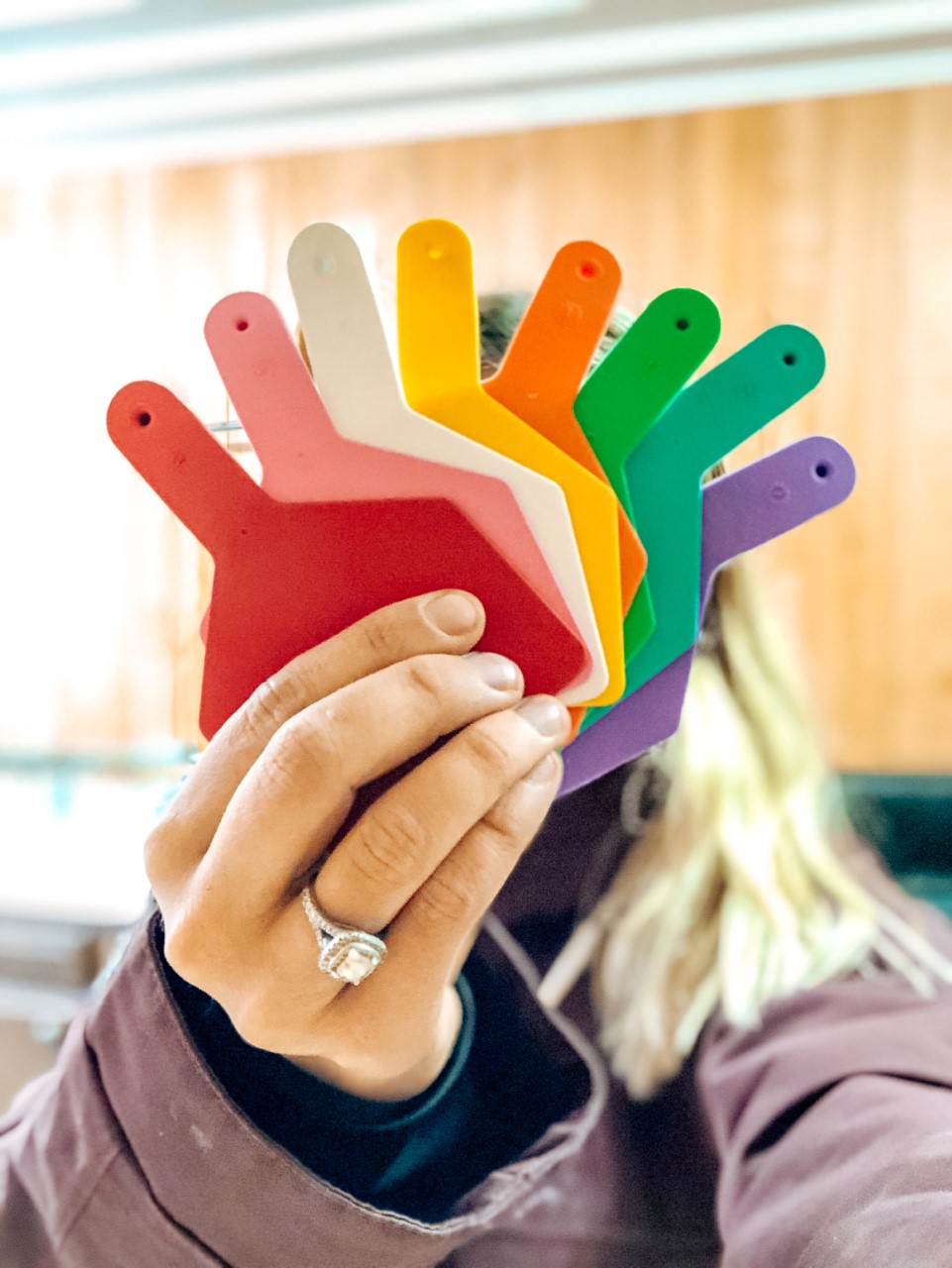
The desk in the pole barn office is a rainbow of tag colors that seems incredibly overwhelming to explain, but there is a method to the madness!

Color
All of our cattle run together, but are owned separately. We used to own a percentage of the herd and have now transitioned away from doing it that way. It all started with easy to read yellow tags when we calved short-term cows. Yellow with black numbers is by far the easiest to read. When we began our keeper herd of cows that we would breed, we tagged them red. Then as we added cows and ownership we also added colors.
Red: Jeff & Leann
Purple: Kyle & Chelsey
White: Colten
Teal: Kade
Pink: Karsyn
Simple…
Except, my parents also run green, orange, yellow, and an occasional blue or combo of the previous options. These colors were purchased and did not originate from the base herd. As a way to distinguish, they are color coded by origin.
When driving through the herd looking for a specific animal it is helpful to narrow down the options with color rather than looking for a number amongst all the same color tags.
Sorting by ownership for any reason is super quick with the colors and we never have any question on ownership.
Number
When an animal is tagged, they will keep their number for life. Therefore, we use a digit system that begins with the year of birth. For calves born in 2022, the first digit of all of their tags will be 2. All of the calves born in 2012 would have also had their number begin with 2.
The following digits are birth order. The first calf will be number 2001 followed by 2002. This number is the most important on the tag; it will be written the largest at the bottom.
For twins we add a letter following the number. When visually checking cattle we like to quickly identify if a calf was a twin. It is rare that we leave twins on a mother, but we continue to keep an eye on the twins whether they stay with their birth mom, get grafted on a new mom, or go to the barn as a bottle baby. Twins would be number 2002A and 2002B. Again, the calf keeps it’s number from birth so if we graft a calf, they will keep their birth number and receive a new tag that includes the graft mother’s number.

Dam Information
There will be times we find a calf that isn’t doing well, especially when the weather turns. Each calf tag will include it’s mother’s number written above the calf number. This allows us to ensure pairs are paired up as we do checks. Then when we sort pairs going to grass we do it from a large group more often than we move pairs two by two. As the cattle get on trailers, we triple check that each load of calves has a matching mama on the accompanying trailer. Finally, as we watch cattle mature, it’s a nice visual to track cow families when their pedigree is included right on their tag.
Sire Information
The first line of the tag contains an abbreviation for the sire group that serviced the pasture. Most of our bulls run with a bull from the same bloodline so we can track our genetic improvements. For example, a group of Donalds will service one pasture and the tags will all read DON. In the event we run multiple bloodlines in a pasture the abbreviation will include both; a Whitlock and Resource combination would read WHIT/RES.
Due to the drought of 2021, we didn’t send any cows to summer pasture. They were all bred together, on an idle field. All of the bulls turned out with all of the cows. I’m incredibly disappointed to have to guess sire based on characteristics rather than seeing calves being born and knowing if we made a good breeding decision. Only our heifers will have sire information for 2022.
Making Tags
Every tag is made as each calf is born. We use both sides of the tag and mark the numbers with two coats from the marker. The tag information is recorded in both the chronological calving book and the cow list book.